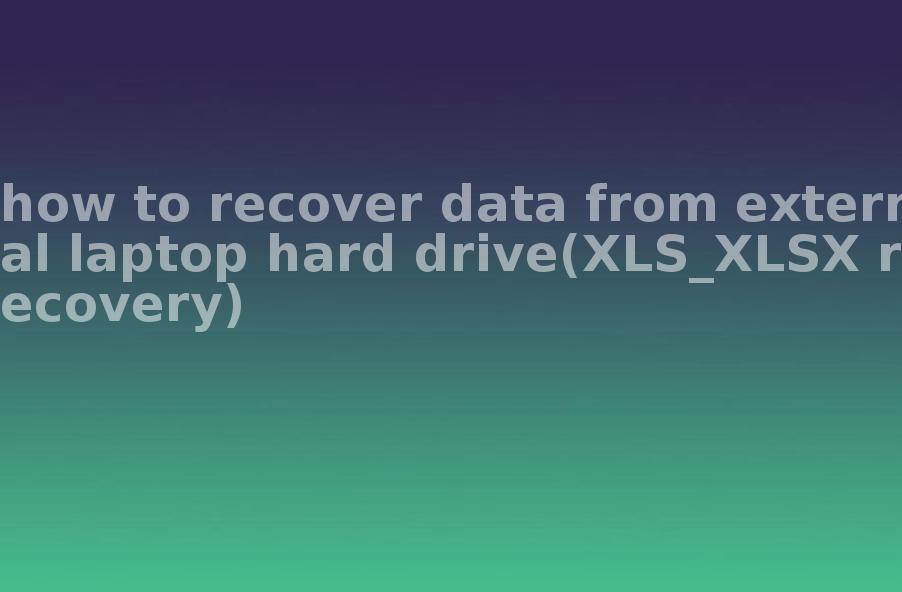how to recover data from external laptop hard drive(XLS_XLSX recovery)
2023-10-19 23:50 261
Part I. Overview of the context in which the document was recovered:
Recovering data from an external laptop hard drive can be a critical task if important files such as XLS or XLSX documents have been lost or deleted. The context in which the document was recovered plays a significant role in determining the success of the recovery process. Here are a few examples of common scenarios:
1. Accidental deletion: It is not uncommon for users to accidentally delete XLS or XLSX files from their external laptop hard drives. This can happen due to human error, such as mistakenly selecting the wrong file for deletion.
2. Formatting or partitioning errors: Sometimes, users may accidentally format their external laptop hard drives or encounter partitioning errors, resulting in the loss of all the data stored on the drive. This can be particularly problematic if important XLS or XLSX documents were present.
3. File system corruption: A corrupted file system can occur due to sudden power outages, improper ejection of the external hard drive, or software errors. As a result, the XLS or XLSX files stored on the drive may become inaccessible or get lost.
Part II. Causes of data loss:
There can be several causes for data loss from an external laptop hard drive. Understanding these causes is crucial in preventing further loss and successfully recovering the data. Here are a few common causes:
1. Human error: Accidental deletion, unintentional formatting, or improper handling of the external hard drive can lead to data loss.
2. Hardware failure: The physical components of the external hard drive, such as the read/write heads or the motor, can fail over time, rendering the data inaccessible.
3. Software corruption: Corruption in the file system or software errors can result in data loss from the external hard drive.
Part III. Solution steps:
To recover data from an external laptop hard drive, including XLS or XLSX files, follow these steps:
1. Stop using the external hard drive immediately to prevent further data loss.
2. Connect the external hard drive to a computer using a USB cable or an appropriate docking station.
3. Use reliable data recovery software (e.g., EaseUS Data Recovery Wizard, Recuva, Stellar Data Recovery) to scan the external hard drive and recover the lost XLS or XLSX files.
4. Select the desired XLS or XLSX documents from the scan results and save them to a different location to avoid overwriting any potentially recoverable data.

5. After successful recovery, ensure you have a backup of the recovered XLS or XLSX files to prevent future data loss.
Part IV. Types of other files that can be recovered:
In addition to XLS and XLSX files, data recovery software can help retrieve various other file types from an external laptop hard drive. Here are a few examples:
1. Documents: DOC, DOCX, PPT, TXT, PDF, etc.
2. Media files: Photos (JPG, PNG, RAW), videos (MP4, AVI, MOV), audio (MP3, WAV), etc.
3. Archives: ZIP, RAR, 7Z, etc.
Part V. Related FAQs:

1. Can I recover data from a physically damaged external hard drive? Yes, there are professional data recovery services available for physically damaged drives. They can open the drive in a controlled environment and retrieve the data using specialized techniques.
2. What should I do if the data recovery software fails to recover my files? If the software fails to recover your files, it is recommended to seek professional data recovery services. They have advanced equipment and expertise to handle complex data loss situations.
3. How can I prevent data loss from an external laptop hard drive in the future? To prevent data loss, regularly backup your files to an external storage device or cloud storage. Avoid mishandling the external hard drive and use reliable antivirus software to prevent malware infections.









